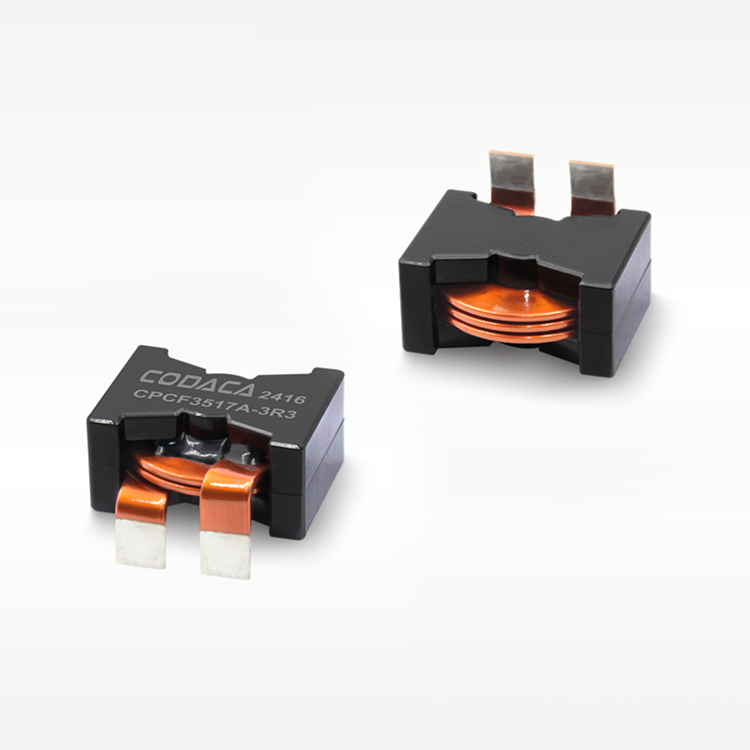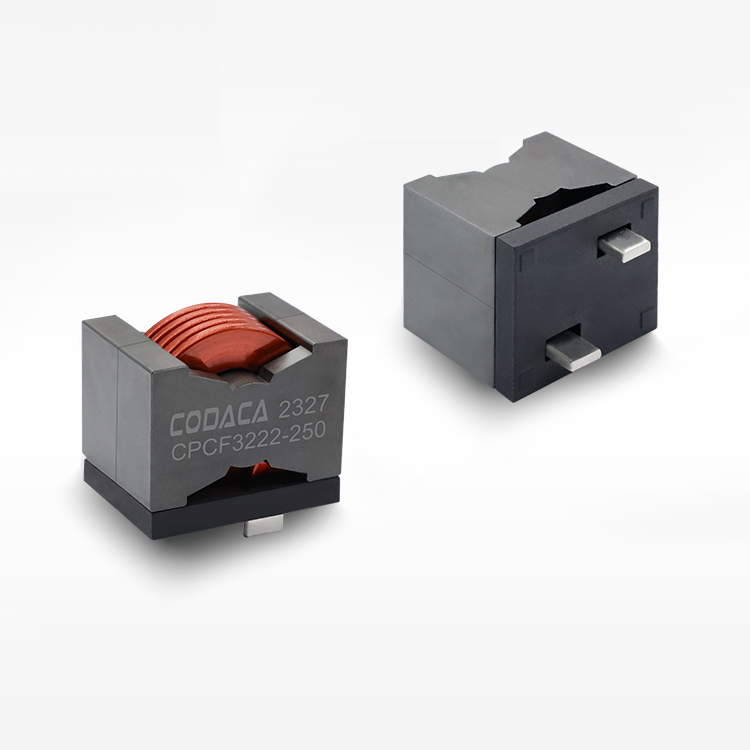Introduction to High Current Power Inductors in Renewable Energy Systems
The Role of Power Inductors in Modern Energy Systems
Power inductors are indispensable components in energy systems that guide and manage energy flow, thus facilitating efficient conversion and storage of electrical energy. These components are crucial in filtering and reducing electrical noise, which enhances the quality, stability, and reliability of energy in renewable applications. By incorporating high current power inductors, designers can significantly boost the performance and efficiency of converters and inverters. This improvement helps maintain a stable energy delivery, which is vital for the smooth operation of renewable energy systems.

Defining High Current Power Inductors
High current power inductors are specially designed inductive components capable of handling substantial current levels while maintaining minimal losses. These inductors play a pivotal role in voltage regulation, ensuring optimal device operation within renewable energy systems. Their robust construction using high-grade materials and innovative design techniques enables them to withstand high temperatures and current loads. This durability makes them ideal for various renewable technologies that demand reliability and efficiency under strenuous conditions.
Overview of Renewable Energy Applications
High current power inductors find utility in several renewable energy applications, including solar inverters, wind turbines, and energy storage systems. They contribute to efficient energy conversion and distribution, supporting the transition to sustainable energy solutions with enhanced performance metrics. Additionally, these inductors facilitate the integration of smart grid technologies by boosting the reliability of power electronics in renewable installations. This reliability is crucial for ensuring that renewable systems function optimally, thereby supporting a sustainable future.

Key Functions of High Current Power Inductors in Renewable Energy
Power Conversion in Solar Inverters
High current power inductors are vital for converting the direct current (DC) produced by solar panels into alternating current (AC), which is used by the power grid. This conversion is essential because most electrical grids and appliances operate on AC power. By minimizing energy losses, these inductors contribute to the overall efficiency of solar energy systems, which is crucial for maximizing the energy captured from the sun. Additionally, their ability to act as filters helps eradicate harmonics, thereby improving the quality of the electricity fed back into the grid. This function not only increases energy efficiency but also enhances grid reliability by reducing the risk of disturbances.
Energy Stabilization for Wind Turbines
In wind energy systems, high current inductors play a critical role in stabilizing energy production by mitigating fluctuations caused by variable wind speeds. These fluctuations can result in inconsistent energy outputs, which pose challenges for grid integration. High current inductors help maintain a constant voltage level, matching grid requirements and meeting load demands. This stabilization process not only facilitates seamless energy distribution but also extends the lifespan of wind turbine components. By ensuring reliable operation, inductors boost the overall efficiency and dependability of wind energy systems, reinforcing their viability as a renewable energy source.
Managing Fluctuations in Renewable Power Generation
Managing the intermittent nature of renewable energy sources is another key function of high current inductors. Renewable energy, by nature, is subject to sudden changes in availability, which can make consistent energy delivery challenging. Inductors mitigate these fluctuations by using inductive energy storage and controlled release, stabilizing the output. This process provides a steady energy supply, significantly enhancing grid stability and efficiency. Furthermore, the ability of high current inductors to synchronize renewable and traditional energy sources supports a balanced and efficient power distribution system, essential for integrating diverse energy sources into a cohesive grid.

Benefits of High Current Power Inductors for Sustainable Energy
Enhanced Energy Efficiency in Grid Systems
High current power inductors play a crucial role in boosting energy efficiency in grid systems, a critical aspect of reducing operational costs and minimizing energy wastage. These components are designed to handle large current loads, ensuring that systems operate reliably without overheating. In fact, empirical studies have demonstrated that systems that incorporate high current inductors exhibit measurable improvements in overall energy efficiency. By sustaining optimal energy flow, these inductors not only enhance system performance but also extend the lifespan of grid infrastructure, making them invaluable in creating sustainable energy solutions.
Thermal Stability Under Heavy Loads
One of the defining features of high current power inductors is their superior thermal stability, which allows them to perform efficiently under heavy loads. This critical characteristic reduces the risk of device failures and extends the working life of power electronics in renewable energy applications. Testing has shown that these inductors maintain consistent performance at elevated temperatures, ensuring both safety and reliability. Their ability to withstand thermal stress without performance degradation is especially important in environments that demand continuous power output, aligning with the goals of sustainable energy systems.
Long-Term Durability in Harsh Environments
Durability is a significant benefit of high current power inductors, especially suited for outdoor applications such as wind and solar energy systems. These inductors are built to withstand extreme weather conditions, including temperature fluctuations and humidity, without significant performance degradation. Manufacturers rigorously test these components to meet industry standards for long-term reliability in harsh operating conditions. This robust design ensures that high current inductors consistently deliver reliable performance, making them a cornerstone in the pursuit of durable and sustainable energy solutions.
Design Considerations for Renewable Energy Applications
Core Material Selection for High Current Demands
Choosing the right core material is essential for optimizing the efficiency and functionality of high current inductors used in renewable energy systems. Ferrites and powdered iron are popular choices because they offer an excellent balance between inductance and power loss, which is crucial for sustaining high current levels. Moreover, these materials are known for their reliability and durability in demanding conditions. Design engineers use simulations to evaluate performance and ensure that the selected material meets the operational demands of various conditions—whether extremes of heat, cold, or load variations—thus ensuring system reliability and efficiency.
Our CPCF series of super high current power inductors uses low power loss ferrite core materials with good current stability in high-frequency and high-temperature environments. Moreover, the saturation current is less affected by temperature and flat wire winding design, resulting in low DC resistance and temperature rise.


Thermal Management Strategies
Effective thermal management strategies are vital to prevent overheating in high current inductors, ensuring their efficiency and longevity in renewable energy applications. Common methods involve incorporating heat sinks, thermal pads, and advanced cooling techniques to dissipate the generated heat efficiently. For instance, studies have demonstrated that optimizing thermal design can significantly enhance the performance of inductive components, maintaining their reliability even during peak load conditions. Engineering teams focus on creating robust thermal management plans tailored to the specific needs of each application, thus safeguarding system components and maximizing energy output.
Size and Weight Optimization for Distributed Systems
Considering the size and weight of high current inductors is important when designing them for integration into compact and distributed renewable energy systems. Modern manufacturing techniques and advanced materials are utilized to achieve lightweight designs that do not compromise on performance or efficiency.
CODACA's high current power inductors CPCF series optimizes the ratio between magnetic core volume, surface area, and coil winding area, resulting in a more compact design that allows the power inductor to achieve maximum output power in a smaller package and occupies the smaller PCB space.


As renewable energy solutions grow and diversify, there is an increasing demand for smaller, more efficient designs that can easily be incorporated into various setups. Engineers are responding to this trend by optimizing inductor design, ensuring that these components fit seamlessly into compact spaces while maintaining their functionality and contributing to the system's overall efficiency and sustainability.
FAQ: High Current Power Inductors in Renewable Energy Systems
What are high current power inductors?
High current power inductors are inductive components designed to handle substantial current levels with minimal energy loss, used in voltage regulation and energy conversion in renewable energy systems.
Why are high current inductors important in renewable energy applications?
They are essential for minimizing energy losses, filtering electrical noise, and managing voltage levels, thereby improving efficiency, reliability, and stability in renewable energy systems.
Which renewable energy applications benefit from high current power inductors?
These inductors are used in applications like solar inverters, wind turbines, and energy storage systems to enhance energy conversion, stabilization, and system efficiency.
How do high current inductors contribute to grid stability?
They manage fluctuations in renewable power generation, ensuring a steady energy supply, which supports grid stability and efficient power distribution.
What is the key consideration in the design of high current inductors for renewable systems?
Selecting core materials like ferrites and powdered iron and implementing effective thermal management strategies are crucial for optimizing their efficiency and longevity in renewable energy systems.
Table of Contents
- Introduction to High Current Power Inductors in Renewable Energy Systems
- Key Functions of High Current Power Inductors in Renewable Energy
- Benefits of High Current Power Inductors for Sustainable Energy
- Design Considerations for Renewable Energy Applications
-
FAQ: High Current Power Inductors in Renewable Energy Systems
- What are high current power inductors?
- Why are high current inductors important in renewable energy applications?
- Which renewable energy applications benefit from high current power inductors?
- How do high current inductors contribute to grid stability?
- What is the key consideration in the design of high current inductors for renewable systems?

